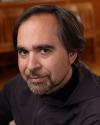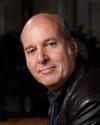Using only their brain waves, quadriplegic artists improvise with professional musicians in this collaboration between DXARTS Art+Brain Lab and Swedish Neuroscience Institute. In a research project hosted at DXARTS' Art + Brain lab in collaboration with Swedish Neuroscience Institute, the patients learned to perform the Encephalophone, a novel Brain Computer Music Interface allowing the creation of music without movement. Made possible with funding from a Creativity Connects grant from the National Endowment for the Arts.
PROGRAM BACKGROUND
Performing with the Brain: A musical performance by patients with motor disabilities.
Project directors: Thomas Deuel, Juan Pampin and Richard Karpen
The Encephalophone is a music prosthetic which uses EEG signal ('brain waves') from paralyzed individuals to play musical instruments hands-free, thus re-enabling musical expression in those who have lost this from neurological injury. In conjunction with DXARTS at U.W., clinical trials are being completed at Swedish Neuroscience Institute under a Creativity Connects grant from the National Endowment for the Arts, culminating in this unique event. This workshop-style experimental concert features two quadraplegic artists from the clinical trial - Jeremy Best and Jonathan Sari - improvising with the Encephalophone with an ensemble of professional jazz musicians (Chris Icasiano - drums, Evan Flory-Barnes - bass, Alex Guilbert - piano, Ray Larsen - trumpet). They will play original compositions written specifically for the instrumentation of the Encephalophone by composer Allan Loucks. The experimental nature of this performance and its musical and technological challenges will make for an unprecedented musical event.
PROGRAM
Introduction and background of the Encephalophone, clinical trials, and performance preparation by Dr. Thomas Duel
Jeremy's Changes, a rearrangement by Allan Louks of Sue's Changes by Charles Mingus
Jeremy Best, Encephalophone
Motor Neuron, original composition by Allan Louks
Jonathan Sari, Encephalophone
Epilogue, original composition by Allan Louks
Disklavier duet for Encephalophone with Jonathan Sari and Jeremy Best
Open improvisation over So What by Miles Davis
Artist Bios
Thomas Deuel
He also brings several years of practice as a sound artist, making site-specific sound installations, interactive music devices, and sound sculptures. His current work involves development of a brain-music interface, using thought control of the subject to create music compositions without movement. He is currently on medical staff at Swedish Hospital as a practicing neurologist, and an epilepsy and EEG specialist.

Juan Pampin (b. Buenos Aires, 1967) is Professor of composition at University of Washington and founding faculty member of the Center for Digital Arts and Experimental Media (DXARTS) for which he currently serves as Director.
Pampin received an MA in Composition from Conservatoire National Supérieur de Musique de Lyon, France and a DMA in Composition from Stanford University, where he studied with composer Jonathan Harvey. Juan Pampin's works explore the territory articulated by the concepts of space, memory, and material, using algorithmic composition and signal processing tools of his own development.
Juan Pampin's music compositions, including works for instrumental, digital, and mixed media, have been performed around the world by world-class soloists and ensembles. His work "On Space" –for percussion sextet and 3D electronic sounds– has been recently released on CD as part of Les Percussions de Strasbourg 50th anniversary historical edition box published by Universal France.

Richard Karpen (b. New York, 1957) is a composer and researcher in multiple areas of music and the arts. His compositions for both electronic media and live performance are widely known, recorded, and performed internationally. Since the early 1980s he has also been in the forefront of the development of computer applications for music composition, interactive performance, and the sonic arts. He is also active as pianist.
Karpen is a Professor of Digital Arts and Experimental Media (DXARTS) and Music Composition at the University of Washington in Seattle. Also at the UW he was founding Director of DXARTS in 2001 and Director of the School of Music from 2009-2020. He has been the recipient of many awards, grants, and prizes, including those from the National Endowment for the Arts, the Bourges Contest in France, and the Luigi Russolo Foundation in Italy. Karpen has composed works for many leading international soloists, such as soprano Judith Bettina, violists Garth Knox and Melia Watras, trombonist Stuart Dempster, flutists Laura Chislett and Jos Zwaanenberg, guitarist Stefan Östersjö, and ensembles such as The Six Tones, JACK Quartet, The Seattle Symphony, and the Harry Partch Ensemble. Karpen is a founding member, with Cuong Vu, of the experimental improvisation ensemble Indigo Mist. As a pianist, Karpen has performed and recorded with Cuong Vu, Bill Frisell, Ted Poor, Steve Rodby, and others. Karpen's compositions and performances have been recorded on a variety of labels including Wergo, Centaur, Neuma, Le Chant du Monde, DIFFUSION i MeDIA, Fleur du Son, Capstone, and RareNoise.

